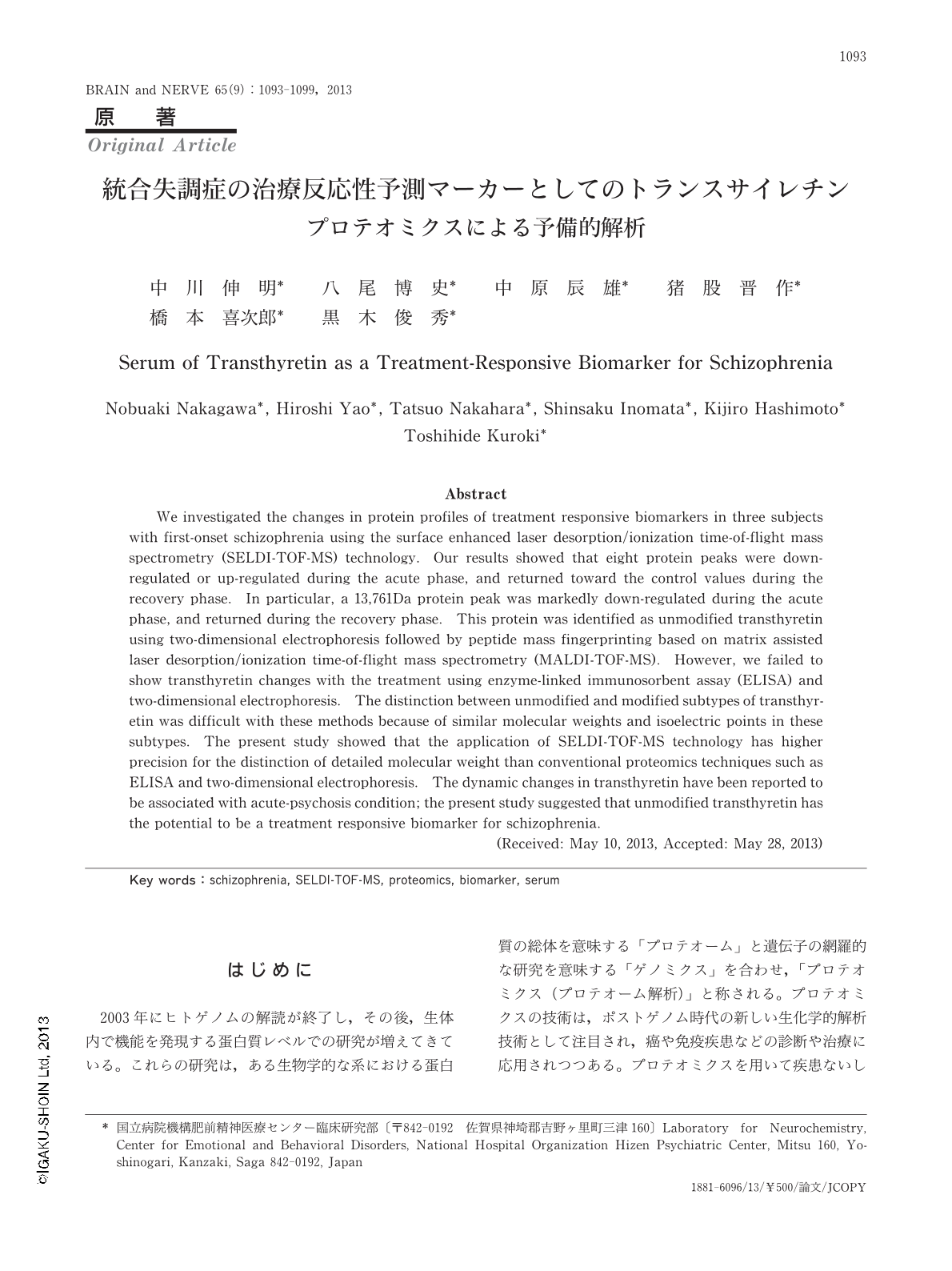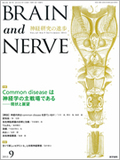Japanese
English
- 有料閲覧
- Abstract 文献概要
- 1ページ目 Look Inside
- 参考文献 Reference
はじめに
2003年にヒトゲノムの解読が終了し,その後,生体内で機能を発現する蛋白質レベルでの研究が増えてきている。これらの研究は,ある生物学的な系における蛋白質の総体を意味する「プロテオーム」と遺伝子の網羅的な研究を意味する「ゲノミクス」を合わせ,「プロテオミクス(プロテオーム解析)」と称される。プロテオミクスの技術は,ポストゲノム時代の新しい生化学的解析技術として注目され,癌や免疫疾患などの診断や治療に応用されつつある。プロテオミクスを用いて疾患ないし病態特異的な多数の機能性蛋白質群の変化をパターンとして読み取るマルチマーカー解析により,感受性および特異性の高いバイオマーカー群を確定することが可能になる。したがって,この技術は多因子が関与する統合失調症の複雑な病態の解明にも貢献するものと期待される。
しかしながら,プロテオミクスによる統合失調症の病態研究は,これまでのところ海外でも髄液,血液,死後脳を対象とした研究報告1-5)がわずかにあるのみで,治療反応性の予測マーカーとして応用した研究は国内外ともほとんどない。そこで筆者らは,急性精神病状態の治療反応性を予測する感受性および特異性の高いバイオマーカーを検出するために,プロテオミクス解析技術の1つである表面増強レーザー脱離イオン化飛行時間型質量分析(surface enhanced laser desorption/ionization-time of flight mass spectrometry:SELDI-TOF-MS)を用いて,統合失調症急性期の治療前後において特異的に変化する血漿蛋白質を網羅的に探索した。
Abstract
We investigated the changes in protein profiles of treatment responsive biomarkers in three subjects with first-onset schizophrenia using the surface enhanced laser desorption/ionization time-of-flight mass spectrometry (SELDI-TOF-MS) technology. Our results showed that eight protein peaks were down-regulated or up-regulated during the acute phase, and returned toward the control values during the recovery phase. In particular, a 13,761Da protein peak was markedly down-regulated during the acute phase, and returned during the recovery phase. This protein was identified as unmodified transthyretin using two-dimensional electrophoresis followed by peptide mass fingerprinting based on matrix assisted laser desorption/ionization time-of-flight mass spectrometry (MALDI-TOF-MS). However, we failed to show transthyretin changes with the treatment using enzyme-linked immunosorbent assay (ELISA) and two-dimensional electrophoresis. The distinction between unmodified and modified subtypes of transthyretin was difficult with these methods because of similar molecular weights and isoelectric points in these subtypes. The present study showed that the application of SELDI-TOF-MS technology has higher precision for the distinction of detailed molecular weight than conventional proteomics techniques such as ELISA and two-dimensional electrophoresis. The dynamic changes in transthyretin have been reported to be associated with acute-psychosis condition; the present study suggested that unmodified transthyretin has the potential to be a treatment responsive biomarker for schizophrenia.
(Received: May 10, 2013, Accepted: May 28, 2013)

Copyright © 2013, Igaku-Shoin Ltd. All rights reserved.


